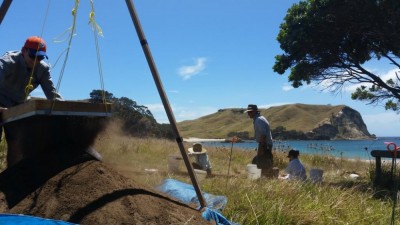Marie Skłodowska-Curie Fellowships for Matt Meredith-Williams and Robyn Inglis

Matt and Robyn have both been successful in winning International Fellowships funded by EU Marie Skłodowska-Curie actions to work, respectively, in New Zealand and Australia.
The Fellowships follow on from and develop their DISPERSE research. The Fellowships are for up to three years and are split between a period of research training and experience outside the EU and a return period in the home institution. Matt’s project is INTERACT (Integrating Archaeological and Climatological Datasets: Investigating Global Human-Environmental Interactions). Robyn’s project is SURFACE (Human-Landscape Interactions and Global Dispersals: the SURFACE Record of Palaeolithic Arabia).
Matt has already begun his Fellowship in January of this year and is spending 2 years working with Professor Simon Holdaway at the University of Auckland, New Zealand,investigating past interactions with climate change and the intensification of food production through the development of methodologies for the uniform treatment of large data-sets that will facilitate worldwide, multidisciplinary comparative studies.
During the past month he has been in the field with the University of Auckland field-school team (#fs15gmi on twitter for pictures), excavating an early Maori site on Great Mercury Island in the ancestral lands of the Ngāti Hei tribe. This has been an excellent introduction to New Zealand archaeology and a great opportunity to learn new field techniques such as Terrestrial LiDAR scanning of sites and rapid digital recording methods using robotic total stations.
Robyn will begin her Fellowship in January 2016 with Professor Patricia Fanning at Macquarie University, investigating the relationship between the surface distribution of stone tools and geomorphological change in semi-arid landscapes. She will gain experience in methods of geomorphological and GIS analysis developed at Macquarie to study mobility in the Holocene hunter-gatherer record in New South Wales, and will adapt these techniques to apply to her research in the Palaeolithic record of Southwestern Saudi Arabia and its implications for the spread of hominin species out of Africa.
The photograph shows the New Zealand team in the field on Great Mercury Island






